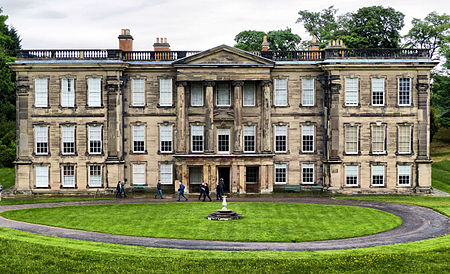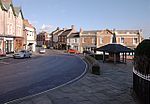Calke Abbey
1704 establishments in EnglandAugustinian monasteries in EnglandCountry houses in DerbyshireGardens in DerbyshireGrade II* listed parks and gardens in Derbyshire ... and 10 more
Grade I listed buildings in DerbyshireGrade I listed housesHistoric house museums in DerbyshireHouses completed in 1704Monasteries dissolved under the English ReformationMonasteries in DerbyshireNational Trust properties in DerbyshireSites of Special Scientific Interest in DerbyshireSouth Derbyshire DistrictUse British English from February 2023

Calke Abbey is a Grade I listed country house near Ticknall, Derbyshire, England, in the care of the charitable National Trust. The site was an Augustinian priory from the 12th century until its dissolution by Henry VIII. The present building, named Calke Abbey in 1808, was never actually an abbey, but is a Baroque mansion built between 1701 and 1704. The house was owned by the Harpur family for nearly 300 years until it was passed to the Trust in 1985 in lieu of death duties. Today, the house is open to the public and many of its rooms are deliberately displayed in the state of decline in which the house was handed to the Trust.
Excerpt from the Wikipedia article Calke Abbey (License: CC BY-SA 3.0, Authors, Images).Calke Abbey
Gardeners' Tunnel, South Derbyshire
Geographical coordinates (GPS) Address Nearby Places Show on map
Geographical coordinates (GPS)
| Latitude | Longitude |
|---|---|
| N 52.799722222222 ° | E -1.4558333333333 ° |
Address
Gardeners' Tunnel
DE73 7JF South Derbyshire
England, United Kingdom
Open on Google Maps










